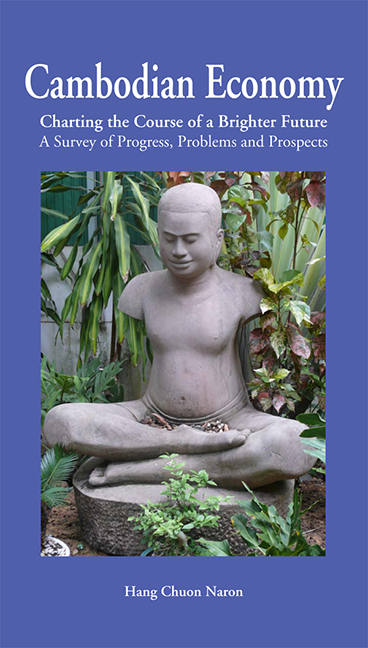 Cambodian Economy
Cambodian Economy from PART V - SERVICES AND INFRASTRUCTURE
Published online by Cambridge University Press: 21 October 2015
Overview
The provision of energy is a major dimension in development; it is a household necessity in a modern society and is a production factor the cost of which directly affects the competitiveness of a range of goods and services where it is a direct or indirect input. The energy potential of Cambodia is still not fully known. A thorough exploration and mapping of the geographical distribution of all available sources of energy is needed for Cambodia to enable a more systematic development of the energy sector. The availability of reasonably priced power is a key ingredient of rural development, particularly in such activities as irrigation, processing of agricultural products, and SME development. The high cost of rural electricity is an important reason for the slow development of the Cambodian rural economy.
16.1.1. Power Sector Strategy
Cambodian's Power Sector Strategy (2001-2005) sets out the priorities and a major investment program to lower tariffs and bring reliable electricity supplies to considerably more Cambodians. The investment program includes: (1) the development of a generation and transmission grid to link large electricity generation units to Phnom Penh and the provincial capitals; (2) rehabilitation of distribution systems in provincial towns; and (3) the development and implementation of rural electrification plan. Rehabilitation and expansion of Phnom Penh's electricity supply system is being continued. Generation capacity is also being expanded with an interconnection from Viet Nam and over the next five years from a new thermal plant in the coastal area. These improvements will enable a more reliable and secure electricity supply to the regions outside of Phnom Penh, which will help deconcentrate the development of industry.
The program to establish the National Generation and Transmission Grid commenced in 2000. The first stage of this program is the construction of transmission line between Viet Nam and Phnom Penh through Takeo Province. The second stage is the construction of transmission line from Sihanoukville to Kampot province.
To save this book to your Kindle, first ensure [email protected] is added to your Approved Personal Document E-mail List under your Personal Document Settings on the Manage Your Content and Devices page of your Amazon account. Then enter the ‘name’ part of your Kindle email address below. Find out more about saving to your Kindle.
Note you can select to save to either the @free.kindle.com or @kindle.com variations. ‘@free.kindle.com’ emails are free but can only be saved to your device when it is connected to wi-fi. ‘@kindle.com’ emails can be delivered even when you are not connected to wi-fi, but note that service fees apply.
Find out more about the Kindle Personal Document Service.
To save content items to your account, please confirm that you agree to abide by our usage policies. If this is the first time you use this feature, you will be asked to authorise Cambridge Core to connect with your account. Find out more about saving content to Dropbox.
To save content items to your account, please confirm that you agree to abide by our usage policies. If this is the first time you use this feature, you will be asked to authorise Cambridge Core to connect with your account. Find out more about saving content to Google Drive.